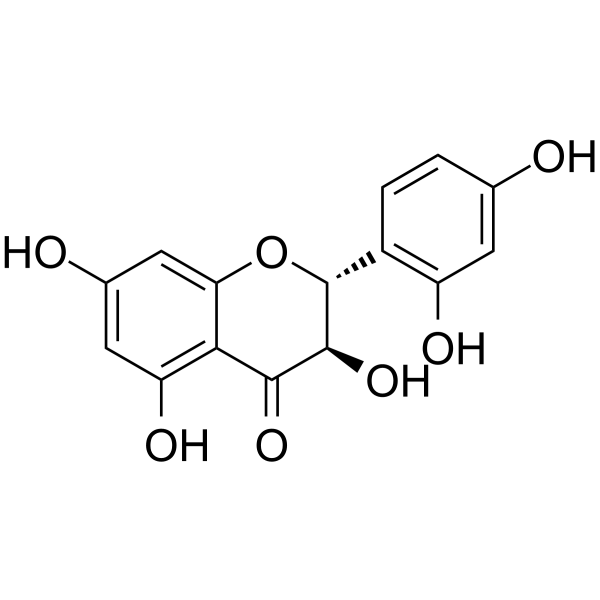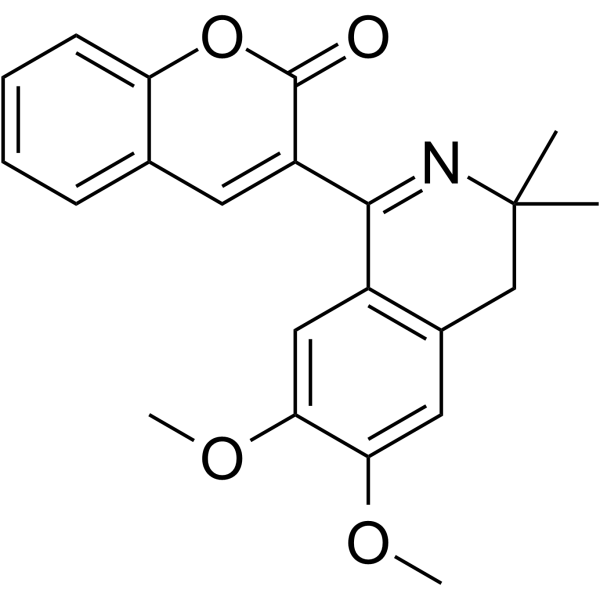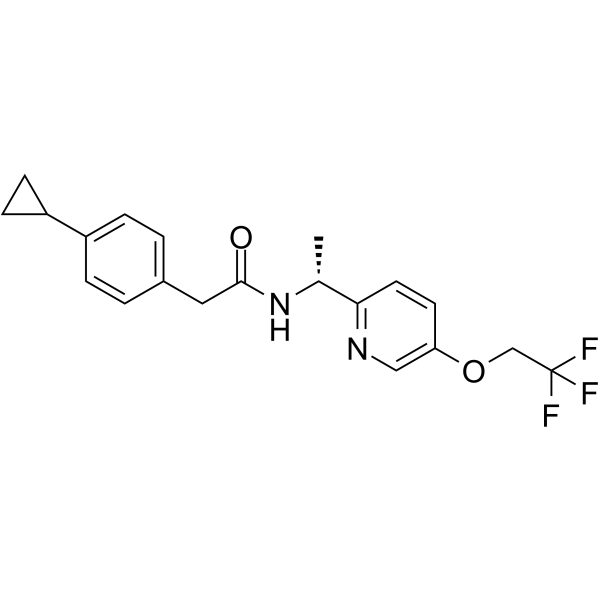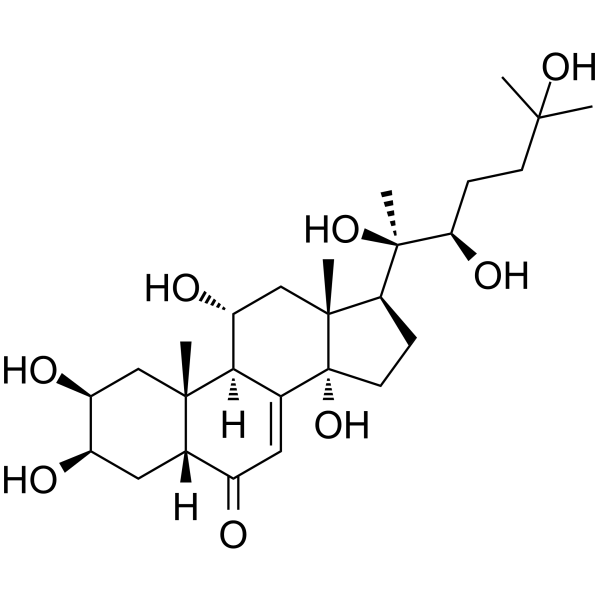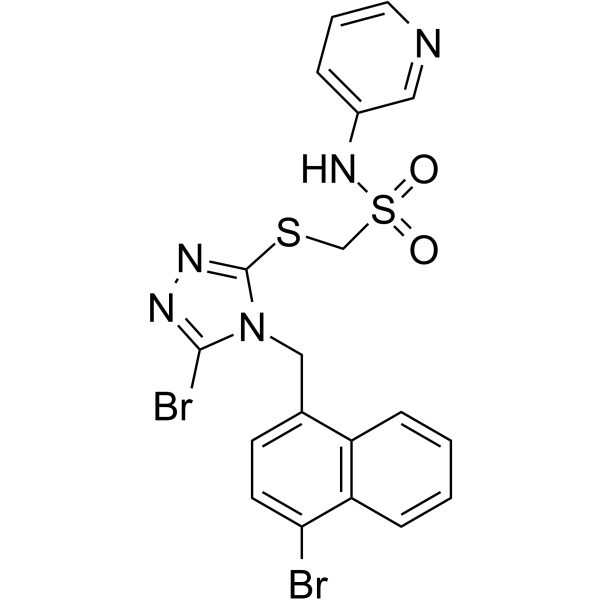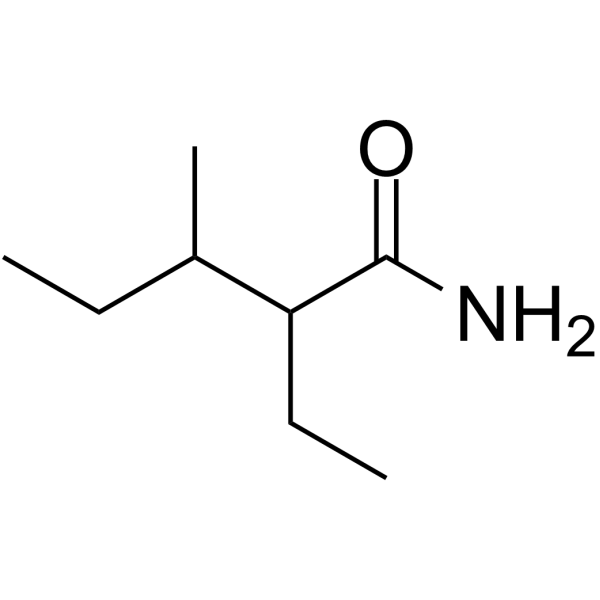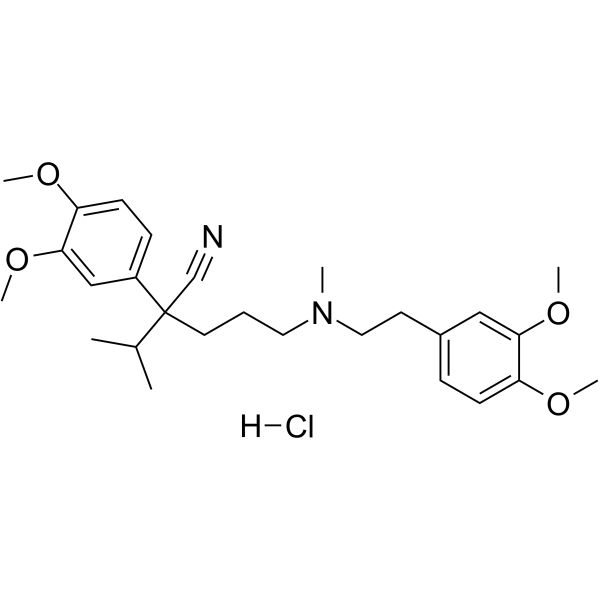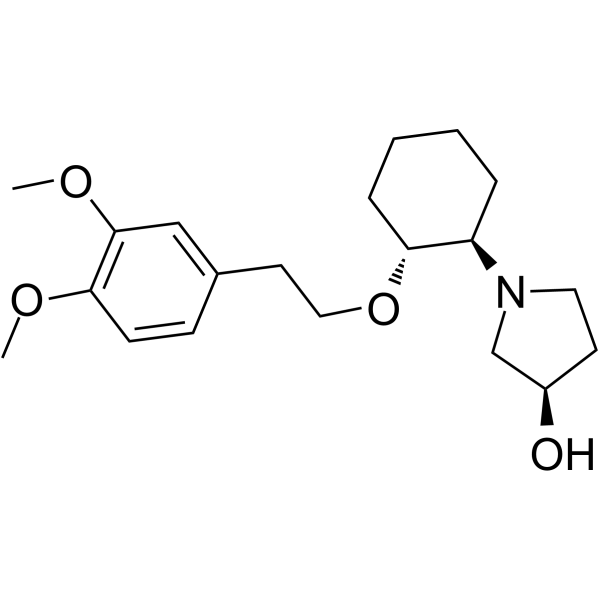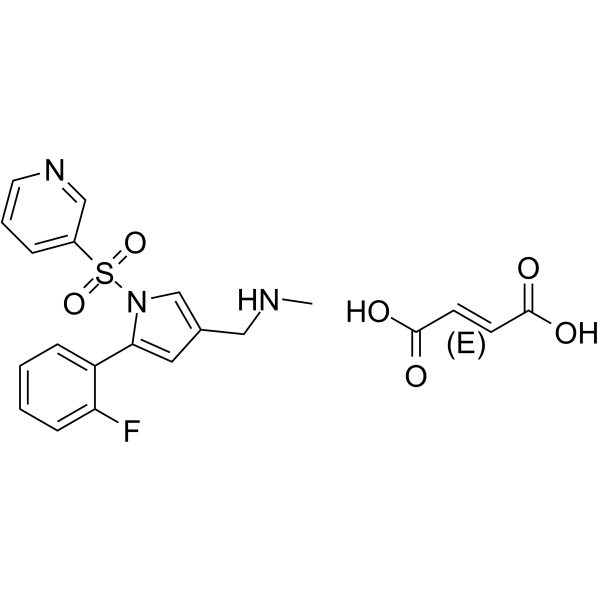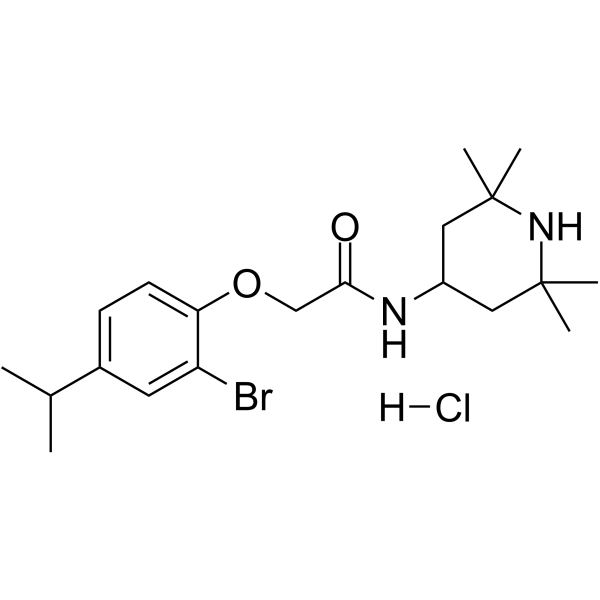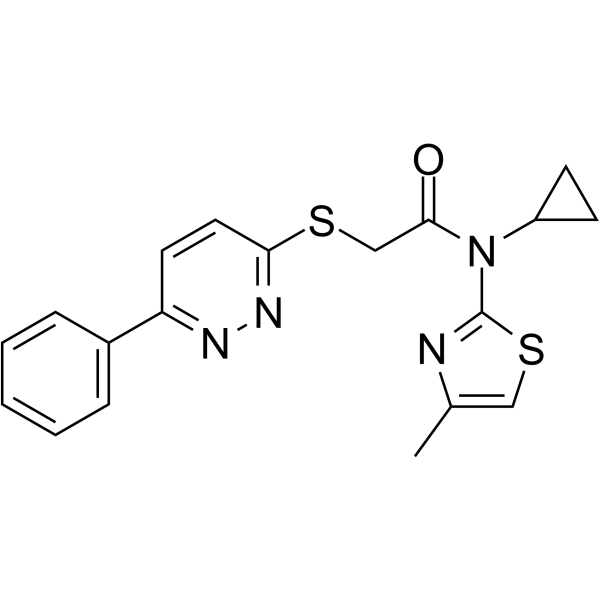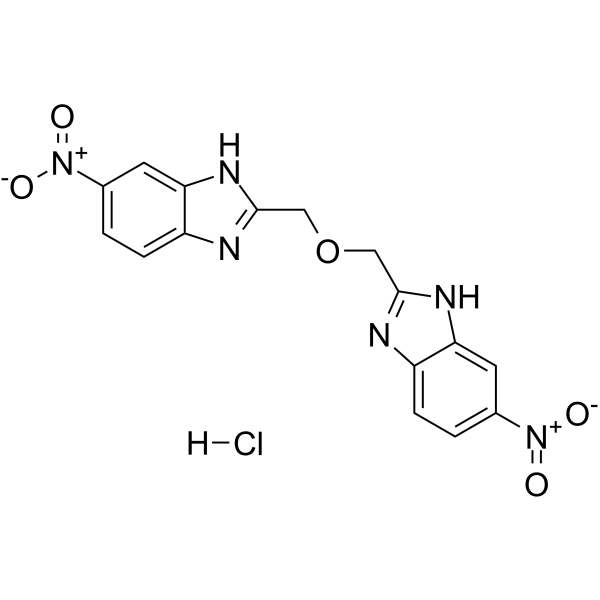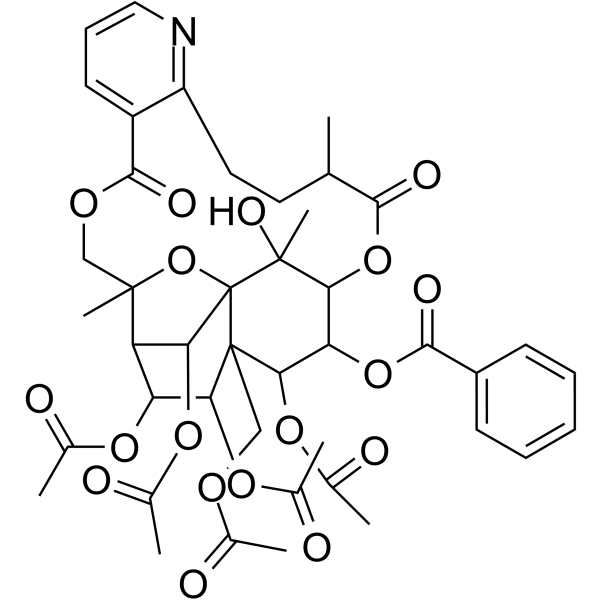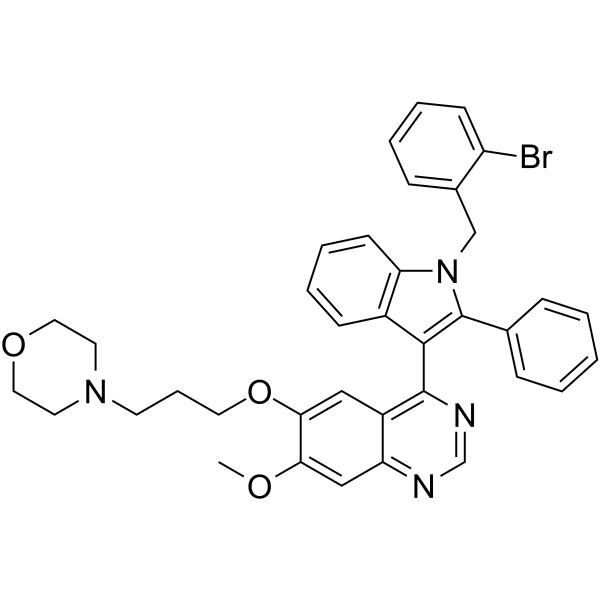|
BP16181
|
Tiagabine
|
|
|
|
|
Tiagabine is an Anti-epileptic Agent. The physiologic effect of tiagabine is by means of Decreased Central Nervous System Disorganized Electrical Activity.
|
|
BP16182
|
TPA 023
|
|
|
|
|
TPA 023 is a selective agonist of GABAA α2/α3 subtype (Kis = 0.19 - 0.41 nM).
|
|
BP16183
|
TRAM-34
|
|
|
|
|
TRAM-34(Kd=20 nM), an effective and specific inhibitor of the intermediate-conductance Ca2+-activated K+ channel (IKCa1, KCa3.1), does not block cytochrome P450. The selective activity of TRAM-34 is 200 to 1500-fold than other ion channels.
|
|
BP16184
|
Transdermal Peptide acetate(888486-23-5 free base)
|
|
|
|
|
Transdermal Peptide (TD 1 peptide) acetate is a 11-amino acid peptide, binds toNa+/K+-ATPase beta-subunit (ATP1B1), and mainly interacts with the C-terminus of ATP1B1. Transdermal Peptide can enhance the transdermal delivery of many macromolecules.Transdermal Peptide TD 1 Amide is novel peptide designed to enhance transdermal drug delivery.
|
|
BP16185
|
Dihydromorin
|
|
|
|
|
trans-Dihydromorin is an effective hypopigmenting agent in normal skin cells, hypopigmenting agents effective in melanoma system may not be effective on normal melanocytes, indicating that a non-tumor melanocyte system is more suitable for the screening of hypopigmenting agents.
|
|
BP16186
|
TRPC6-PAM-C20
|
|
|
|
|
TRPC6-PAM-C20 is a selective TRPC6 positive allosteric modulator. TRPC6-PAM-C20 induces transient increase in intracellular Ca2+ in HEK cells expressing TRPC6 with an EC50 of 2.37 μM. TRPC6-PAM-C20 enhances OAG-induced platelet aggregation.
|
|
BP16187
|
TTA-A2
|
|
|
|
|
TTA-A2 is a selective T-type calcium channel antagonist as a potent anticonvulsant that the Cav3.1 isoform plays a prominent role in mediating. TTA-A2 is equally potent against the Cav3.1 (a1G) and Cav3.2 (a1H) channels with IC50 values of 89 nM and 92 nM, respectively, at -80 and -100 mV holding potentials. TTA-A2 can be used for the research of a variety of human neurological diseases, including sleep disorders and epilepsy.
|
|
BP16188
|
Turkesterone
|
|
|
|
|
Turkesterone is a phytoecdysteroid possessing an 11alpha-hydroxyl group, also is an analogue of the insect steroid hormone 20-hydroxyecdysone. It has immunomodulating and antistress activity, can increase the adaptation capacity of mice under immobilization-induced stress conditions.
|
|
BP16189
|
URAT1 inhibitor 1
|
|
|
|
|
URAT1 inhibitor 1 (1g) is an inhibitor of uric acid transporter 1 (URAT1) (IC50: 32 nM), has the potential to treat hyperuricemia associated with gout.
|
|
BP16190
|
Valnoctamide
|
|
|
|
|
Valnoctamide inhibits benzodiazepine-refractory status epilepticus. Valnoctamide acts directly on GABAA receptors.
|
|
BP16191
|
Verapamil hydrochloride
|
|
|
|
|
Verapamil hydrochloride is a calcium channel blocker that is a class IV anti-arrhythmia agent.
|
|
BP16192
|
Vernakalant
|
|
|
|
|
Vernakalant (RSD-1235) is a mixed ion channel blocker.
|
|
BP16193
|
Vindorosine
|
|
|
|
|
Vindorosine has blood vessel relaxation effect, possible underlying mechanisms involving the inhibition of Ca(2+) entry via L-type Ca(2+) channels in vascular smooth muscles.
|
|
BP16194
|
Vonoprazan fumarate
|
|
|
|
|
Vonoprazan Fumarate (TAK-438) is a novel P-CAB (potassium-competitive acid blocker) that reversibly inhibits H+/K+, ATPase.
|
|
BP16195
|
Vonoprazan Fumarate
|
|
|
|
|
Vonoprazan Fumurate, a novel potassium-competitive acid blocker, inhibits gastric acid secretion. Vonoprazan Fumurate inhibited H+,K+-ATPase activity in porcine gastric microsomes with IC50 value of 19 nM at pH 6.5.
|
|
BP16196
|
VU0134992 hydrochloride
|
|
|
|
|
VU0134992 hydrochloride is the first subtype-preferring, orally active and selective blocker of Kir4.1 potassium channel pore(IC50 : 0.97 μM).
|
|
BP16197
|
VU0463271
|
|
|
|
|
VU0463271 is a potent and selective antagonist of the neuronal-specific potassium-chloride cotransporter 2 (KCC2), with an IC50 of 61 nM and >100-fold selectivity versus the closely related Na-K-2Cl cotransporter 1 (NKCC1) and no activity in a larger panel of GPCRs, ion channels, and transporters.
|
|
BP16198
|
VU591 hydrochloride
|
|
|
|
|
VU591 hydrochloride is a selective renal outer medullary potassium channel (Kir1.1, ROMK) antagonist (IC50:0.24 μM). Thought to block the intracellular pore of the Kir1.1 channel. Exhibits no effect on Kir7.1 at concentrations up to 10 μM; does not inhibit Kir2.1, Kir2.3 or Kir4.1. Displays similar potency to VU 590
|
|
BP16199
|
Wilforine
|
|
|
|
|
Wilforine is a sesquiterpene pyridine alkaloid; important bioactive compound in T. wilfordii plants, and is effective in treating idiopathic pulmonary fibrosis. Wilforine has anti-inflammatory effect, which might be mediated by down-regulation of the expression of inflammatory factors TNF-α, IL-6 and NO. It also has insecticidal activity by inhibiting the Na+-K+-ATPase in the central nervous system.
|
|
BP16200
|
YS-370
|
|
|
|
|
YS-370 is an orally active inhibitor of P-gp and shows moderate inhibition against CYP3A4. YS-370 effectively reverses multidrug resistance to paclitaxel and colchicine and exhibits stronger antitumor activity in combination with paclitaxel.
|
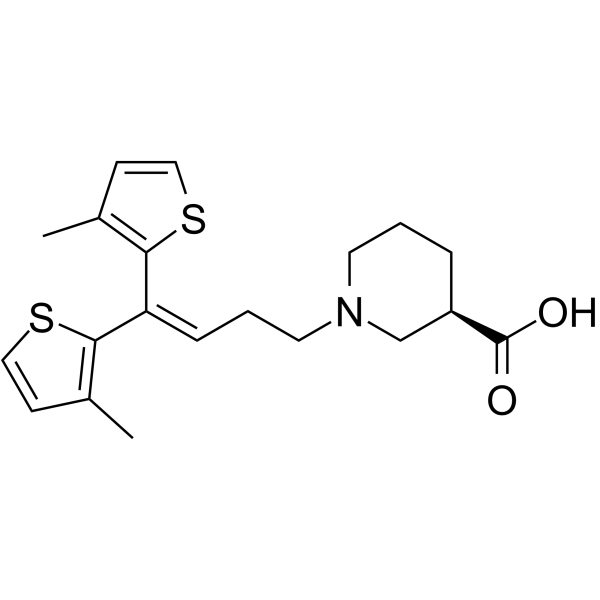
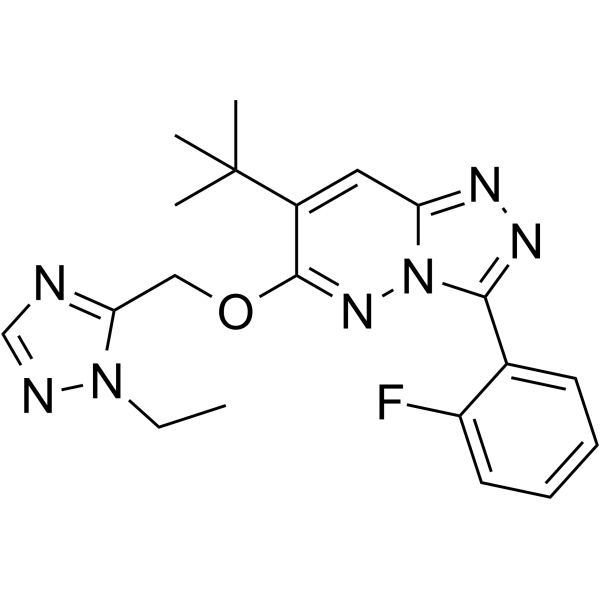
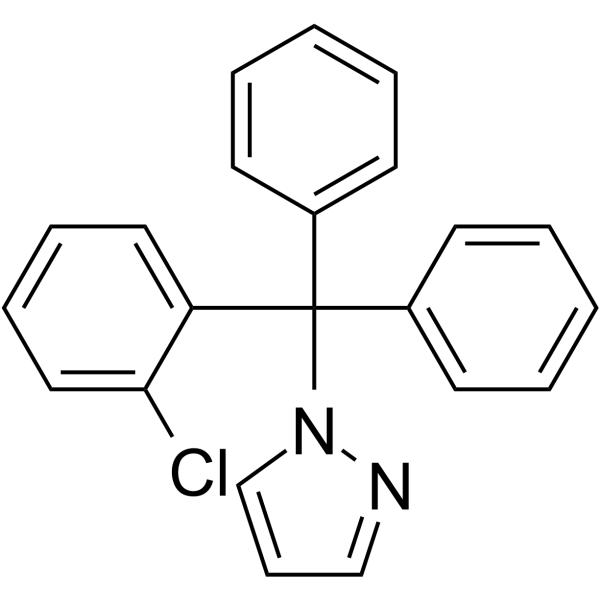
.gif)
